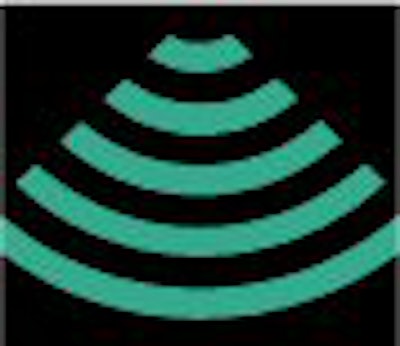
"Thyroglobulin measurement in fine-needle aspiration biopsy specimens is a useful technique in aid for diagnosis of lymph node metastasis of papillary thyroid cancer," wrote Dr. Takashi Uruno in a poster presentation at the 2003 American Thyroid Association meeting in Palm Beach, FL. Uruno is a surgeon at Kuma Hospital in Kobe, Japan.
"This is a rather easy procedure to perform," added Uruno, whose colleagues included doctors at the department of surgery II at the Nippon Medical School in Tokyo.
From October 2001 to March 2003, the group used ultrasound-guided procedures to sample 129 enlarged lymph nodes in 11 patients before surgery. Ultrasound-guided fine-needle aspiration (FNA) was used to sample 121 superior or inferior deep cervical lymph nodes; six paratracheal or pretracheal lymph nodes, and two subdermal or superficial cervical lymph nodes.
The specimens were obtained with a 22-gauge needle connected to a 10-ml syringe. Immediately after the samples were obtained from the lymph nodes, the specimens were smeared onto glass slides for cytological examination. The same needle was rinsed with 0.5 ml of saline solution and the washout was measured for hemoglobin using FNA biopsy thyroglobulin techniques.
"If the biopsy-obtained thyroglobulin level was higher than the serum thyroglobulin of the patient, we assumed that the lymph node was positive," Uruno explained. "Measurement of thyroglobulin in the washout of the needle has been proposed for early detection of lymph node metastasis in patients of differentiated thyroid cancer."
Of those nodes, Uruno said 96 were found to be solid and 33 were cystic or mixed in nature. All of the cystic or cystic and mixed nodes proved to be positive; 75% of the enlarged solid lymph nodes also contained malignant cells, he said.
The nodes that were positive had thyroglobulin ranges of 6.2 to 8000 ng/ml; the negative nodes had thyroglobulin ranges of 0.6 to 88.8 ng/ml. The FNA biology thyroglobulin tests proved to have a sensitivity of 81.4%, while FNA biopsy cytology had 78% sensitivity, Uruno reported.
The study indicated that the washout could be used for this diagnosis with a high degree of accuracy.
US-guided ethanol ablation
In a second presentation, investigators from the Mayo Clinic College of Medicine in Rochester, MN explained how ultrasound-guided percutaneous ethanol ablation could be used to treat patients for recurrent thyroid tumors without subjecting these patients to "a life sentence" of neck surgery.
Dr. Ian Hay, professor of medicine, said his team had successfully performed 60 ultrasound-guided percutaneous ethanol ablations since 1991. In this study, he reported outcomes on 30 patients who had 37 recurrent nodes treated with the ethanol ablation therapy. He said 15 of the tumors disappeared and have not recurred since treatment. The other 22 nodes either have regressed in size or have shown no blood flow into the tumor based on PET scans.
"We had satisfactory results in all 37 of the nodes treated," he said. "We have seen no re-growth of percutaneous ethanol-injected nodes."
He said 25 of the patients have continued to be followed for more than a year. Six of the patients returned with nine additional nodes that were also treated with ultrasound-guided percutaneous ethanol ablation. Of those nodes, four disappeared and one showed no blood flow.
Hay said the procedure is well-accepted by patients and no serious complications have resulted from the therapy. However, the procedure requires considerable skill and expertise of both surgeon and ultrasonographer, he added.
Commenting on the study was Dr. Susan Mandel, assistant professor of medicine and radiology at the University of Pennsylvania in Philadelphia. Mandel said she has referred patients with recurring thyroid cancer to Hay’s group at the Mayo Clinic for the procedure.
"This is a good treatment for a subset of patients ... who have had previous surgery and who have a small burden of disease," Mandel said. "I don’t think this is a first-line treatment for recurrent thyroid cancer. It may not even be a second-line treatment."
Reproducibility is the main issue, with a general lack of experience with this technique at most institutions, said Mandel, who also is the associate chief for clinical affairs in the division of endocrinology, diabetes, and metabolism at the university.
Because recurrent thyroid cancer occurs relatively infrequently, and because refractory cases occur even less often, Mandel said it is difficult for many institutions to gain enough experience to perform the technically exacting procedure.
"You need a large volume of patients to do this procedure well," she said. The Mayo Clinic is one of the few places to meet that requirement, with surgeons now performing the procedure about 20 times a year, Hay said.
By Edward Susman and Brian Schneiderman
AuntMinnie.com contributing writers
October 22, 2003
Related Reading
Extrathyroidal growth of thyroid cancer increases risk of local, distant metastases, August 28, 2003
Pre-treatment with rhTSH reduces 131I retention in thyroid, July 23, 2003
US-guided aspiration with FDG-PET targets metastatic thyroid cancer, June 23, 2003
Low-iodide diet enhances efficacy of radiotherapy for thyroid cancer, May 1, 2003
Copyright © 2003 AuntMinnie.com

















